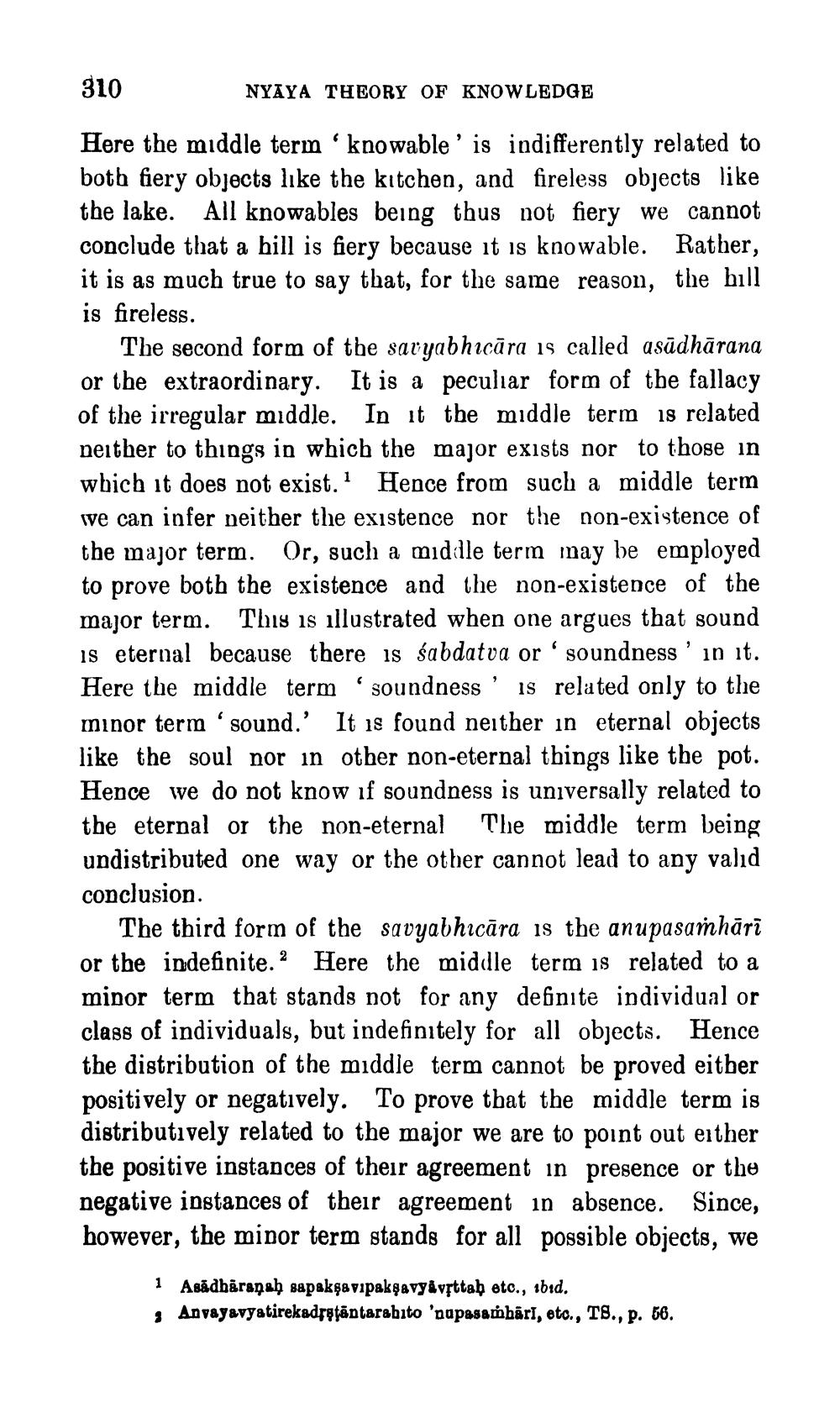________________
310
NYAYA THEORY OF KNOWLEDGE
Here the middle term 'knowable' is indifferently related to both fiery objects like the kitchen, and fireless objects like the lake. All knowables being thus not fiery we cannot conclude that a bill is fiery because it is knowable. Rather, it is as much true to say that, for the same reason, the bill is fireless.
The second form of the savyabhucāra is called asūdhārana or the extraordinary. It is a peculiar form of the fallacy of the irregular middle. In it the middle term is related neither to things in which the major exists nor to those in wbich it does not exist. Hence from such a middle term we can infer neither the existence nor the non-existence of the major term. Or, such a middle term may be employed to prove both the existence and the non-existence of the major term. This is illustrated when one argues that sound is eternal because there is sabdatva or 'soundness' in it. Here the middle term 'soundness' is related only to the minor term 'sound.' It is found neither in eternal objects like the soul nor in other non-eternal things like the pot. Hence we do not know if soundness is universally related to the eternal or the non-eternal The middle term being undistributed one way or the other cannot lead to any valid conclusion.
The third form of the savyabhıcāra is the anupasamhāri or the indefinite.2 Here the middle term is related to a minor term that stands not for any definite individual or class of individuals, but indefinitely for all objects. Hence the distribution of the middle term cannot be proved either positively or negatively. To prove that the middle term is distributively related to the major we are to point out either the positive instances of their agreement in presence or the negative instances of their agreement in absence. Since, however, the minor term stands for all possible objects, we
1 Asadbäraneh sapakşavipakşavyavrttab etc., ibid.
Anvayavyatirekadrotāntarabito 'napasambärl, etc., T8., p. 56.




